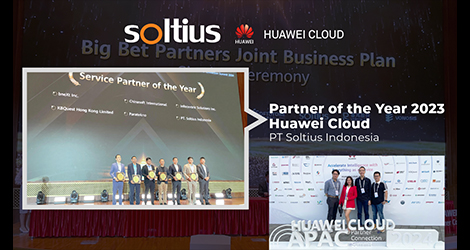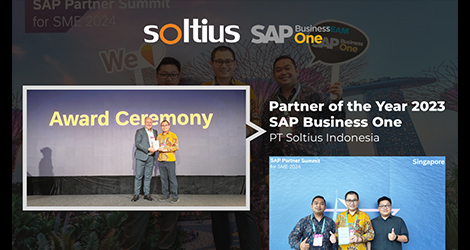What Do SMBs Want and Need from ERP Software

For years, enterprise resource planning (ERP) vendors have been trying to crack the small to medium business (SMB) code. The mighty tier one ERP software vendors, after exhausting their opportunities among large enterprises, have been trying to repackage or retrofit their wares to appeal to SMBs. Their success has been mixed at best.
Conversely, specialized SMB ERP providers claim that they have always been well-attuned to the needs of smaller enterprises and the “little guy.” But what do SMBs really need? How do they differ from large enterprises—and how are they similar?
Many SMBs now have global customers and suppliers, a development first enabled by e-commerce (the so-called Internet global village) and now exploding as cloud computing levels the playing field. Can SMBs be satisfied with affordable pre-packaged SMB ERP software solutions for the sake of speed? Do they truly need something different than what larger global enterprises are using—and what is it?

The Needs of SMBs vs. Large Enterprises
Regardless of an SMB’s stage in the business life cycle, these companies tend to have an urgent focus on growth, quick successes, and customer acquisition. In contrast, established enterprises (public or private) tend to focus on stability, customer loyalty, profitability, and reducing expenses and waste.
Large enterprises have the wherewithal and unique business processes that give them a competitive advantage. Traditional on-premise ERP software solutions with broad functional footprints are generally more suitable and malleable to the needs of these large companies, which want to facilitate their proprietary processes rather than settle for cut-and-dried best practices.
Large enterprises tend to have enough time and internal resources to allow them to tweak those differentiating business processes and practices. Such companies also pay much more attention to risk and compliance—perhaps sometimes even more than necessary. Here they typically use add-on compliance solutions to complement traditional ERP software solutions, as their internal IT departments can manage the necessary integration, customization, and upgrade maintenance.
On the other hand, compelling user experience (UX) is very important for SMBs. An ERP solution must be very easy to use and intuitive, with a minimum number of tweaks needed to get the software going. In addition, simple customizations are also critical—SMB prospects are not typically well-versed with IT industry standards and new developments, nor can they afford a costly internal IT team. Thus, if a particular ERP requires customization that is complex and/or expensive, that software will not likely be selected by the SMB.

In addition to ease of use and easy, low-code expandability and/or customization, adaptability to support growth and access to information is important to smaller companies. They’re looking to ERP software to help them be faster and more productive than their competitors, make data-based decisions, streamline their processes by merging disparate software, etc.
Bottom line: SMBs have similar needs as their larger brethren—they just have fewer people to do the work. The challenge for these smaller companies is a general deficit of financial and human resources, inhibiting their ability to experiment with new technology while running their day-to-day operations.
The Pragmatic Automation Paradox
Conventional wisdom is that large enterprises, due to having more IT and other wherewithal, would be much more likely candidates to stitch together the mishmash of best-of-breed (specialist point solutions) enterprise offerings from diverse providers. Also, they would be much keener to experiment with new technologies such as the Internet of Things (IoT), big data, in-memory databases, artificial intelligence (AI), blockchain, etc. However, this isn’t necessarily the case.
Although those large global enterprises tend to have significantly greater IT resources to apply to these new technological breakthroughs, they may face culture-based hurdles for this frantic pace and incredible pressure to adopt and embrace these new solutions. Namely, those vast organizational hierarchies tend to exhibit risk-averse behaviors, more decision-making gridlock, more finger-pointing, and slower adoption because of the “analysis paralysis” phenomenon.
In contrast, and somewhat ironically because of their limited resources, SMBs could more quickly adopt and benefit from a higher level of automation or other emerging technologies. With the proper focus and advice from SMB ERP software vendors, as well as from their value added resellers (VARs) and integration partners, SMBs might be the ones to take advantage of less complex pre-packaged integrations for solutions involving AI, machine learning, financial technology, etc.
But those SMBs will want to see quick return on investment (ROI) opportunities that enhance their product and service offerings. Once wary of integrations and multi-vendor solutions, SMBs might be more open to experimenting—as long as those add-on solutions have “apps store” appeal and simplicity. In addition, new SMB ERP software solutions are increasingly being built on an innovative cloud architecture designed from the ground up with the following traits:
- Microservices and open RESTful application programming interfaces (APIs) for easy integrations and extensions in the so-called API economy
- A built-in AI engine (based on open source AI/cognitive tools or coming from cloud infrastructure providers), which enables predictive and prescriptive solutions
- Flexible and adaptable rules that manage workflows and apps’ interactions
- Some cloud infrastructure providers even offer affordable and fast in-memory computing with the ability to process large volumes of data in an instant
Smart and Simple Does It for SMBs
All ERP users have traditionally spent too much time verifying that processes ran correctly and outcomes were as expected, all done after the fact, and on time-consuming, resource-heavy operations such as batch transaction processing, accounting period closing processes, and periodic audits—all of which only help identify issues after the fact. Traditional descriptive reports and analytics in ERP software could only tell users what happened without telling them much about why it happened, let alone how to remedy it.
But instead of taking this traditionally reactive approach, SMB ERP users can nowadays be proactive and benefit from using augmented intelligence tools that understand context and anticipate needs. In other words, the software could “watch the shop,” e.g., by spotting irregular transactions, those that have incorrect values, or could otherwise be of interest, prompting users to review specific transactions.

As mentioned earlier, SMBs also have global trading partner networks and might benefit from a decentralized ledger that records and verifies transactions chronologically and in real time without a costly middleman or central authority. It won’t be long before an increasing number of small businesses will be accepting cryptocurrency as a form of customer payment, especially if they want to do business in regions with a major rate of bitcoin, ether, etc. adoption. They may even start paying their vendors and suppliers in cryptocurrency.
Smaller financial institutions, legal firms, digital publishers, insurers, medical companies, and similar businesses could be potential beneficiaries of blockchain. But smaller firms typically don’t have the wherewithal to experiment with unproven technologies, so wider adoption of blockchain among SMBs will happen only once blockchain solution providers offer more affordable solutions with quick proofs of concept.
In a nutshell, affordability, implementations with fixed time frames and/or fees, a vertical industry focus, and simplicity remain the key tenets of success in the SMB enterprise software market. But a single solution from a particular SMB ERP vendor might be less desirable in this API economy due to SMBs’ expectations for interoperability and low code platforms.
Contrary to larger enterprises, most SMBs do not have a strategic IT vision. It is rather about “can we plug a hole and meet a particular need?” If one can bridge a gap with a particular cool new tool, great, as long as it provides quick benefits in a real-life use case scenario. The more functionality SMB ERP software vendors can provide, the better—but today’s SMBs are getting increasingly comfortable with the best-of-breed software setups if they solve real problems quickly and in a simple ways.
Blog originally published on Technology Evaluation Centers
Other News


